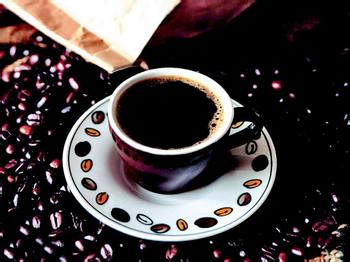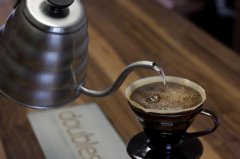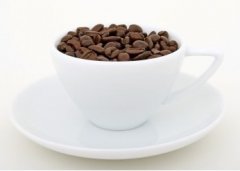The reason why the basic knowledge of coffee affects the taste of coffee
A cup of coffee, from the curl of aroma, extends to a variety of sour, bitter and astringent flavors, and ends with a long aftertaste, the middle taste is very subtle, and there are many reasons for this subtle taste.

From a large point of view: among the factors that determine the taste of a cup of coffee: raw bean quality accounts for 60%, roasting accounts for 30%, extraction accounts for 10%.
Just as no superb chef can make a delicious meal without high-quality materials, only high-quality coffee beans can guarantee the making of delicious coffee. In other words, the quality of coffee beans has a decisive effect on the taste of a cup of coffee. There are two kinds of coffee beans that people use to make coffee: Arabica beans and Robosta beans. Roberta beans taste single and bitter, have no sour taste and aroma, and are not tasty enough, so Roberta is mostly used to make instant coffee, and a small part is used to make Italian concentrated mixed beans. because Roberta can increase the mellowness of concentrated coffee. Arabica beans, on the other hand, are relatively rich in aroma, rich in flavor, with a beautiful sour taste, and taste soft and smooth. But even Arabica beans are divided into three, six or nine grades. High-quality Arabica beans are all growing at a height of more than 1000 meters, with abundant sunshine, abundant rainfall and fertile soil. They are obtained through a series of processes of meticulous production, picking, and processing. In these Arabica beans, there are a small number of excellent ones, they have a unique advantage in the natural conditions of growth, and after careful processing and screening, they are always ranked first in the determination of taste evaluation, and they are called boutique coffee (specialty coffee). On the other hand, a large number of inferior Arabica beans and inferior products also flood the market, especially in the Chinese market, because the time of exposure to coffee is relatively short, and the coffee market is quite primary, so there are very few real high-quality beans. Most of them are medium-and low-quality products of general quality.
Roasting is the most difficult and difficult part of coffee technology to master. Roasting gives coffee beans a second life through the experience of fire. Good roasting can make coffee beans coruscate new vitality and show their greatest brilliance, while improper roasting failure will destroy the original excellent coffee beans. The degree of baking is generally divided into four degrees: shallow, medium, deep and heavy, and the specific subdivision can be divided into two in each degree, that is, light baking includes light (light) cinema (cinnamon) medium (moderate) high (medium high) city (city) full city (half city) italy (Italy) French (French). In the roasting process of coffee beans, a series of chemical reactions take place inside the coffee beans by heating them, and the above eight degrees are achieved in turn with the continuous heating. The shallow roasting can obviously show the acidity of the coffee, and the deeper roasting will further explore the sweetness and deeper taste of the coffee. At the same time, with the deepening of the roasting degree, the acidity will be lost more. Bitterness produces more, but at its deepest French baking is carbonized beans that have only bitter taste but no sour taste. In general, in order to show its personality, different products will have different roasting degrees, but there is no recognized standard for more subtle division, such as roasting Columbia super beans in medium style to better enjoy its good acidity or high style roasting in order to obtain deeper taste and better balance and mellow. It is different according to the baker's personal preference and the taste orientation of the consumers it has to face. The baking of espresso is even more difficult: in addition to baking, it is also difficult to mix beans. Because the deep-baked espresso uses a single variety of beans, the flavor is not rich enough, so more than two kinds of mixed beans are generally used in baking. Generally speaking, Brazilian beans are added to espresso to increase its sweetness and mellowness. Italians also add some Robosta beans in order to improve the mellowness of espresso, while two kinds of beans with similar personalities are not suitable for blending. Baking is a thermal reaction that takes place completely within 15 minutes, and subtle taste changes take place every second with the change of heat and time in the baking process, so you can master the baking just right in order to maximize the personality of coffee beans.
With roasted high-quality coffee beans, the next step is to extract. The factors affecting extraction can be found from the following aspects:
First, the freshness of coffee beans. The flavor of the roasted coffee bean is fully revealed after 48 hours, and the best flavor period is within a week. With the passage of time, the aromatic molecules in the coffee bean continue to volatilize and absorb the peculiar smell in the air. The flavor of coffee beans will gradually lose, and after a month, it has basically lost its flavor, only bitterness and bad taste remaining.
Two, water. 98% of a cup of coffee is water. The quality and temperature of water affect the taste of coffee to some extent. In general, the trace elements contained in tap water or mineral water will react with the substances in coffee to affect the taste of coffee, and the excellent water quality will also have a bad effect on the taste of coffee, so pure water should be used in coffee extraction. Secondly, about the water temperature: the most suitable water temperature for coffee extraction is between 89Met 93 degrees. Too high temperature will increase the bitterness of coffee, while too low temperature will make coffee too sour.
Third, extraction time. Regardless of the means and tools used, a reasonable grasp of the extraction time is one of the things you need to pay attention to to make a good cup of coffee. Too long extraction time will cause excessive extraction, so that the bitter taste and bad ingredients in the coffee will be extracted, on the contrary, if the extraction time is too short, it will cause insufficient extraction, the coffee taste is too light, the taste is not rich enough.
Fourth, the factors of baristas and coffee drinkers. The previous ones are all objective factors, but this one is relatively subjective. But believe it or not, technical factors aside, this cup of coffee tastes good only when a barista is confident, serious, and tries his best to make a cup of coffee. And coffee drinkers, according to the mood, the degree of understanding of coffee is different, can feel the taste of coffee will be very different.
Important Notice :
前街咖啡 FrontStreet Coffee has moved to new addredd:
FrontStreet Coffee Address: 315,Donghua East Road,GuangZhou
Tel:020 38364473
- Prev

The relationship between coffee beans and countries in the producing area of high-quality coffee beans
Mexican coffee from Central America and Mexico is mainly concentrated in Chabas, Oaxaca, Veracruz, Puebla, Guerrero, Hidalco, St. Lewis and Porto. The annual output is about 5 million bags, which is the main source of income for agricultural products. Mexican coffee beans have large particles, and the coffee produced is smooth, mellow and fragrant. Coffee has a light color and high acidity, and most of them grow under natural conditions.
- Next

Basic knowledge of Fine Coffee Classification and Classification of Coffee beans
Coffee beans are graded first by size and then by density. With two exceptions, all coffee beans have a considerable size and the same proportion, with flat on one side and semi-oval on the other. The special cases are pea-shaped coffee beans that tend to be more oval in shape and giant coffee beans with large particles (that is, Marragol peel coffee beans). The prices of these two kinds of coffee beans are always higher.
Related
- Beginners will see the "Coffee pull flower" guide!
- What is the difference between ice blog purified milk and ordinary milk coffee?
- Why is the Philippines the largest producer of crops in Liberia?
- For coffee extraction, should the fine powder be retained?
- How does extracted espresso fill pressed powder? How much strength does it take to press the powder?
- How to make jasmine cold extract coffee? Is the jasmine + latte good?
- Will this little toy really make the coffee taste better? How does Lily Drip affect coffee extraction?
- Will the action of slapping the filter cup also affect coffee extraction?
- What's the difference between powder-to-water ratio and powder-to-liquid ratio?
- What is the Ethiopian local species? What does it have to do with Heirloom native species?

